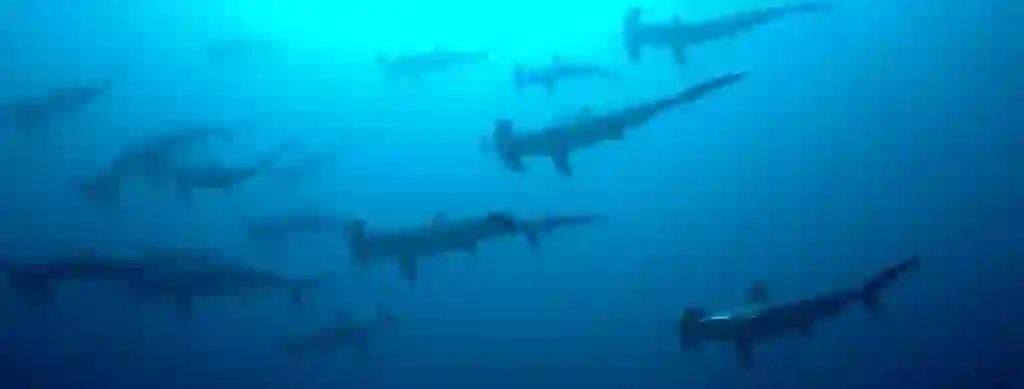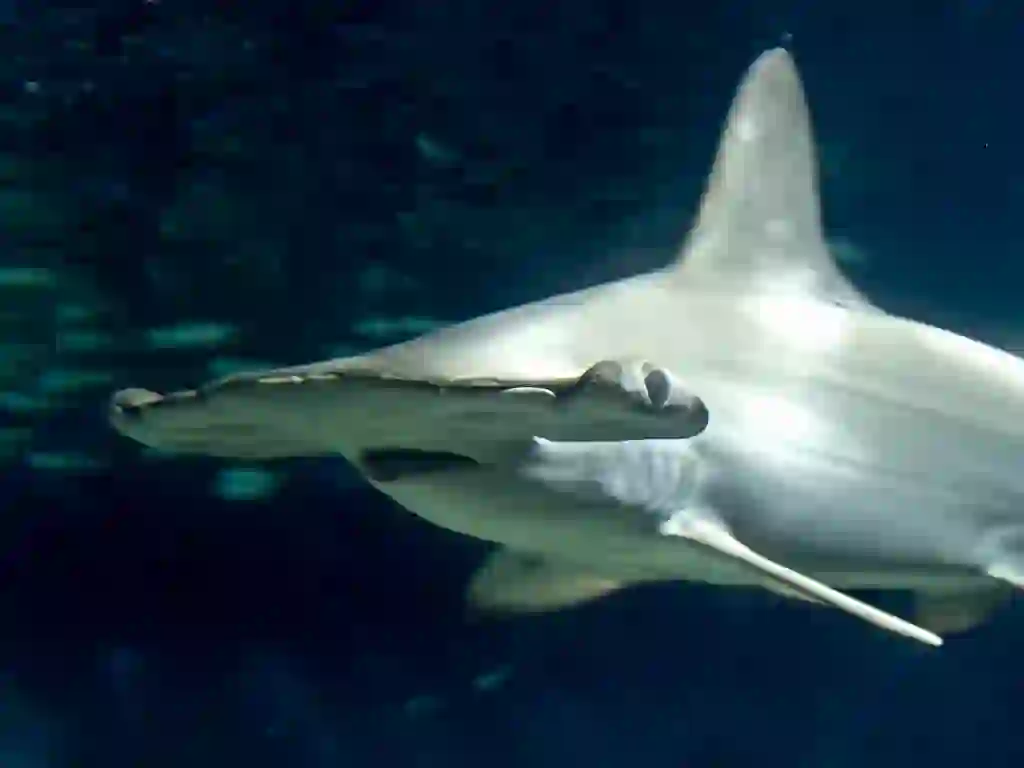
Scalloped Hammerhead Shark
Scalloped Hammerhead Shark
Scalloped Hammerhead Shark
The scalloped hammerhead shark, a captivating species that mesmerizes divers with its unique hammer-shaped head. They travel the warm waters of the world, sometimes forming massive schools. However, their populations are declining due to overfishing and habitat destruction. Let's explore the fascinating ecology of the scalloped hammerhead shark and the threats they face.
Scalloped Hammerhead Shark Basic Infomation
.webp?alt=media)
| Property | Value |
|---|---|
| Scientific Name | Sphyrna lewini |
| Taxonomic Status | ACCEPTED |
| Rank | SPECIES |
| Vernacular Names | Scalloped Hammerhead Shark |
| Kingdom | Animalia |
| Phylum | Chordata |
| Class | Chondrichthyes |
| Order | Carcharhiniformes |
| Family | Sphyrnidae |
| Genus | Sphyrna |
| Habitats | Coastal and semi-oceanic waters worldwide |
| Descriptions | The scalloped hammerhead shark is widely distributed in warm oceans, utilizing both coastal and semi-oceanic habitats. Juveniles form schools, while adults are mostly solitary or found in pairs. |
| Conservation Status | Critically Endangered |
.webp?alt=media)
Size
The scalloped hammerhead shark can grow up to 14 feet (4.3 meters) long and weigh up to 335 pounds (152 kilograms). Females tend to be larger than males.

Lifespan
They are estimated to live for about 30 to 35 years.

Distribution
They are widely distributed in tropical and subtropical waters worldwide. They have been sighted in a variety of locations, from coastal areas to the open ocean, but they prefer to inhabit areas around continental shelves and islands. They can be found in Okinawa and the Ogasawara Islands in Japan.
Scalloped Hammerhead Shark Q&A
.webp?alt=media)
What kind of shark is the scalloped hammerhead shark?
The scalloped hammerhead shark is a species of hammerhead shark, known for its unique hammer-shaped head. Their head is laterally expanded, with eyes and nostrils located at the tips.
This hammer-shaped head is called a 'cephalofoil.' In English, they are called 'scalloped hammerhead sharks.' 'Scalloped' refers to the gently curved front edge of their cephalofoil.

What is the purpose of the scalloped hammerhead shark's hammer-shaped head?
The scalloped hammerhead shark's cephalofoil is a remarkable adaptation that helps them thrive in the ocean.
・Wide field of vision: Their eyes are located on the cephalofoil, giving them a wider field of vision than other sharks, which helps them to locate prey and avoid predators.
・Enhanced sense of smell: The cephalofoil also acts as an olfactory organ. By swinging their cephalofoil from side to side, they can detect the scent of prey from a wider area.
・Electroreceptors: The cephalofoil contains a high concentration of electroreceptors called 'ampullae of Lorenzini.' These organs can detect the weak electrical fields generated by other organisms, helping them find prey hidden in the sand and detect predators.
・Lift: The cephalofoil acts like an airplane wing, generating lift, allowing them to move through the water with less energy.
・Maneuverability: The cephalofoil also acts as a rudder, enabling them to make quick turns in the water.
It's truly a multifunctional hammer!

What do scalloped hammerhead sharks eat?
Scalloped hammerhead sharks are carnivores and their diet primarily consists of fish, squid, octopus, and crustaceans. They use the 'ampullae of Lorenzini' in their cephalofoil to locate stingrays buried in the sand.
When they find a stingray, they pin it to the seabed using their cephalofoil and use their sharp teeth to bite and kill it. They are known to have a preference for stingrays. They also eat other types of fish and smaller sharks, and occasionally, seabirds. They are voracious hunters and have even been known to cannibalize each other.
.webp?alt=media)
[Quiz!] How do scalloped hammerhead sharks reproduce?
Scalloped hammerhead sharks reproduce through a method called 'ovoviviparity.' This means that the eggs hatch inside the mother's body, and the pups are born live.
Females give birth to 15 to 31 pups at a time. The pups are about 20 to 24 inches (50 to 60 cm) long at birth and can swim immediately. They take about 10 years to reach adult size.

[Quiz!] Do scalloped hammerhead sharks form schools?
Young scalloped hammerhead sharks are known to form large schools of hundreds of individuals.
They swim and hunt together in these schools. However, as they mature, they tend to become more solitary. The reason why young individuals form schools is not yet fully understood, but it is thought to be a defense mechanism against predators or a strategy for finding food more efficiently.

[Quiz!] Are scalloped hammerhead sharks endangered?
Unfortunately, scalloped hammerhead sharks are listed as 'Critically Endangered' on the IUCN (International Union for Conservation of Nature) Red List.
Their population has declined sharply due to overfishing, shark finning, and bycatch. To protect scalloped hammerhead sharks, it is crucial to regulate overfishing, ban shark finning, and reduce bycatch. It is also essential for each of us to be aware of shark conservation.

Would you like to become a part of the 'Animalbook.jp'?
Turn your knowledge into Q&A and share it with the world. ※Publication will be activated after purchase. Let's share information together!
Scalloped Hammerhead Shark Type of List
.webp?alt=media)
Efforts to Protect Scalloped Hammerhead Sharks
- Strengthening fishing regulations
- Banning shark finning
- Reducing bycatch
- Establishing marine protected areas
- Raising awareness
Information
Congratulations! You are the first commenter!

Create Your Favorite List!
Scalloped Hammerhead Shark
Save the animals you love! Build your own list to quickly revisit your favorites later.

Would you like to leave a comment?
※Please note: This is for the purchase of rights to post comments within the article.
Find Your Favorites!
Our shop offers a unique and attractive selection of goods themed around various animals.
Scalloped Hammerhead Shark References
Scalloped Hammerhead Shark Introduction of media used
.webp?alt=media)
NOAA Photo Library, Public domain, via Wikimedia Commons

Ryan Espanto, CC BY 2.0, via Wikimedia Commons

su neko, CC BY-SA 2.0, ウィキメディア・コモンズ経由で

Help Enrich Our Animalbook.jp with Your Media!
We are constantly looking to expand and enrich our Animalbook.jp with amazing photos and videos of animals. If you have any media that you'd like to share, please contribute and help us showcase the beauty and diversity of the animal kingdom. Your submissions will be credited and featured in our encyclopedia, reaching a wide audience of animal lovers.


















